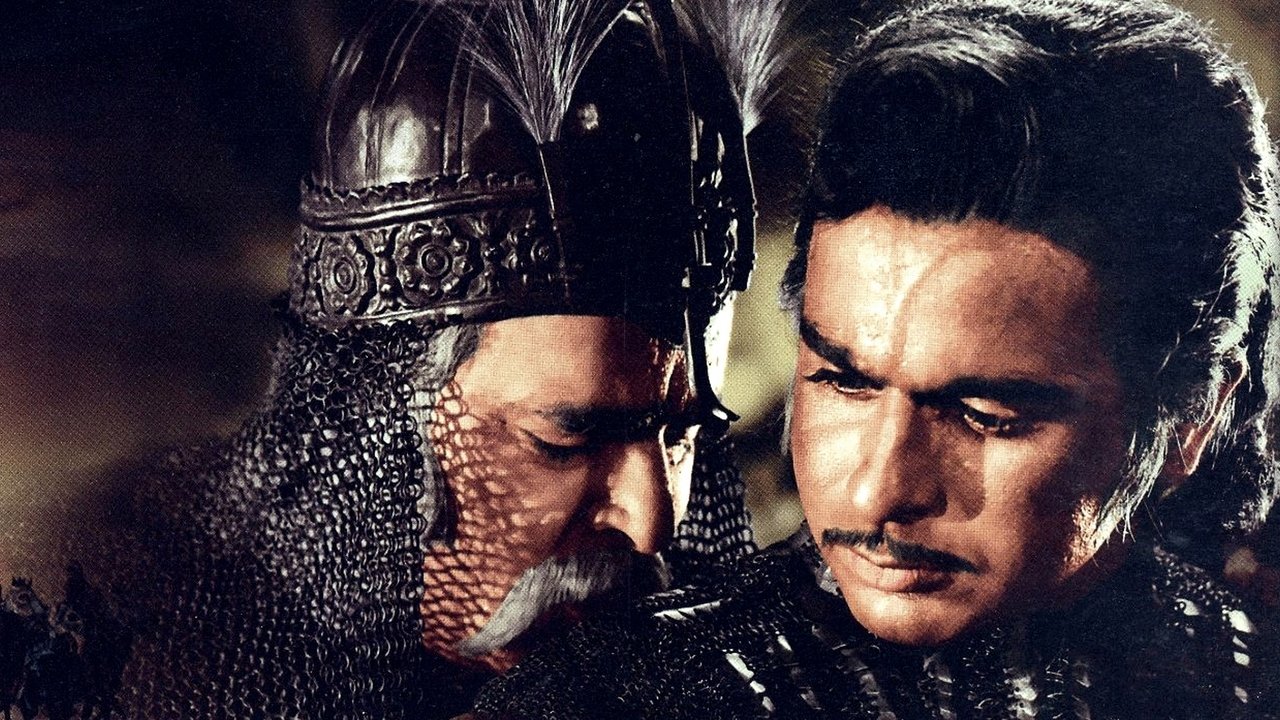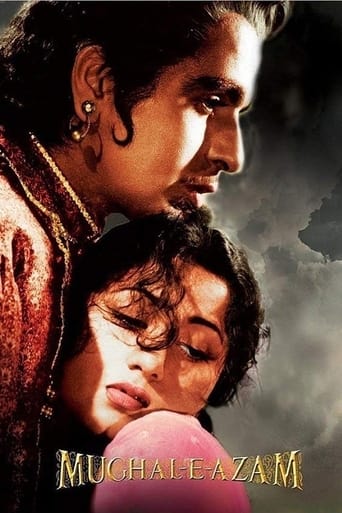Laikals
The greatest movie ever made..!
Phonearl
Good start, but then it gets ruined
Roy Hart
If you're interested in the topic at hand, you should just watch it and judge yourself because the reviews have gone very biased by people that didn't even watch it and just hate (or love) the creator. I liked it, it was well written, narrated, and directed and it was about a topic that interests me.
Phillipa
Strong acting helps the film overcome an uncertain premise and create characters that hold our attention absolutely.
Sagar Bhatt
I loved this movie; though I can't say that every part of it was perfect, it was very close to perfection. I loved the music, the dances, the culture, and the depiction of India during the Mughal empire. I especially loved the purity of the language, though I couldn't understand every word because a significant portion of it was in Urdu whereas I'm Hindu.That said, this is certainly not THE best Bollywood movie ever. Many people seem to think that, and many articles call it the #1 Bollywood movie, but there've been many other movies that I felt were better. Aamir Khan's movies, for example, are more appealing to the newer generation, and have much more to teach.
Zarminae Ansari
Note: I've marked the spoiler sign- but this is a well known myth so no surprises here (not even the ending- which is also a popular myth where Anarkali comes back as NurJahan).Prepare to be dazzled. A luscious feast for the senses, the new restored & colorized version allows us to appreciate the fine attention to detail. The colors are breathtaking- and that is when I realized that Sanjay Leela Bhansali- much as I like that director- isn't all that original. K. Asif got there first. Bhansali tried to do the lavish sets, gorgeous costumes, attention to detail, assault of color in Devdas. But K. Asif got there first- and without the digital technology of today.That is only the film's visual victory over your defenses. When there is silence in a scene- you can only just hear the fountains, and the crystal droplets of the "shama daans" or lamps tinkling in the soft breeze. And then there are the gorgeous, tight, beautifully written dialogs rendered in chaste Urdu (by all actors, regardless of religion- Prithviraj Kapoor's progeny might like to take a feather off his cap, and polish up their enunciation - really there is no reason why the poet Ghalib must be referred to as Gaalib by today's lazy actors). It was a relief to my ears which are usually accosted in even the best Karan Johar entertainer, by an unfortunately politicized and degraded Hindustani.Then there are the performances. Albeit some performances and dialogs are melodramatic, over-the-top- especially the ones with the mother, Queen Jodha Bai, yet one must understand the requirement of the time, as well as the archetypes that were (and are) close to the heart of the audiences. These often have religious and mythological overtones which most people would immediately have picked up on- the mother, the wife, the beloved.Technically, so much has been said about the cinematography, especially in the dance scene in the Hall Of Mirrors, and the battle scenes- that I wont repeat them- but I'll just say- pay attention to these and remember these scenes were shot despite the limitations of available technology. Amazing! Finally- the fabulous on screen chemistry of Dilip Kumar and Madhubala. With his nuanced acting and the slightest inflection in tone conveying volumes- Dilip Kumar is simply arresting and with her naughty, flirtatious first dance as Radha, Madhubala conveys the passionate Anarkali. Their scenes together are never vulgar or titillating- just terribly erotic- sensuous- again tactile: Prince Salim brushing a feather against Anarkali's skin...Really- there's so much more to write- but I'll just say that there is a reason this is a classic. Enough said.10/10
Chinmay Joshi
I was amazed to see how good the movie was. It was much better than what I had expected. It shows the love story of the mughal emperor Akbar's son Salim with the singer/maid Anarkali. Akbar orders death penalty to anarkali. But the last moment twist in the story is not what everyone hopes for. It depicts the sound judgment of Akbar. The music is also good. Lata's voice is marvellous. The war scene is filmed very well keeping in mind the kind of special effects available at that time. All the actors performances are brilliant. Prithviraj Kapoor and Dipil Kumar's clash is to look out for. Madhubala is as beautiful as always. This movie is must watch for all Indian classic movie lovers.
Malik Taufiq - ur - Rehman Awan
The ostentatious look, the unforgettable music, the awesome war scenes, superb performances, the well-known romance between Salim and Anarkalis MUGHAL-E-AZAM will always remain as a point of reference.After 44 years, this masterpiece has been released after reviving it in color (the original version was 85 percent black and white and 15 percent colour), with an upgraded, contemporary sound system (Dolby Digital).The Story is about the Ruler Akbar (Prithviraj Kapoor) and Queen Jodha (Durga Khote) give birth to a son, Salim, after years of prayer.Prince Salim (Dilip Kumar) grows into a commendable combatant. Salim falls in love with court dancer Anarkali (Madhubala). Initially wary of his affections because of the difference in their positions, she soon reciprocates his love.Akbar finds out about the affair and that creates a rift between the father and son. It is a must see movie for every moviegoer for its pure canvass, for its majestic framing and not just for being a colorful costume drama, for its romance, for the glorious Sheesh Mahal and also for our fake filmmakers (like karan johar, aditya chopra, nikhil advani, kunal kohli and many others like them) who cannot think beyond Manhattan and singing heroes and have light years to reach this level of film-making. MUGHAL-E-AZAM is a must for those who have seen it in B & W. Now watch it in color and experience the grandeur. MUGHAL-E-AZAM is a must for todays generation, who, perhaps, may not have watched this classic. Watch this epic and you will realize the difference between the cinema of yore and the cinema of today. MUGHAL-E-AZAM is a must for every moviegoer. Here is a prime example of pure, unadulterated cinema. 4 ½ Out of 5

